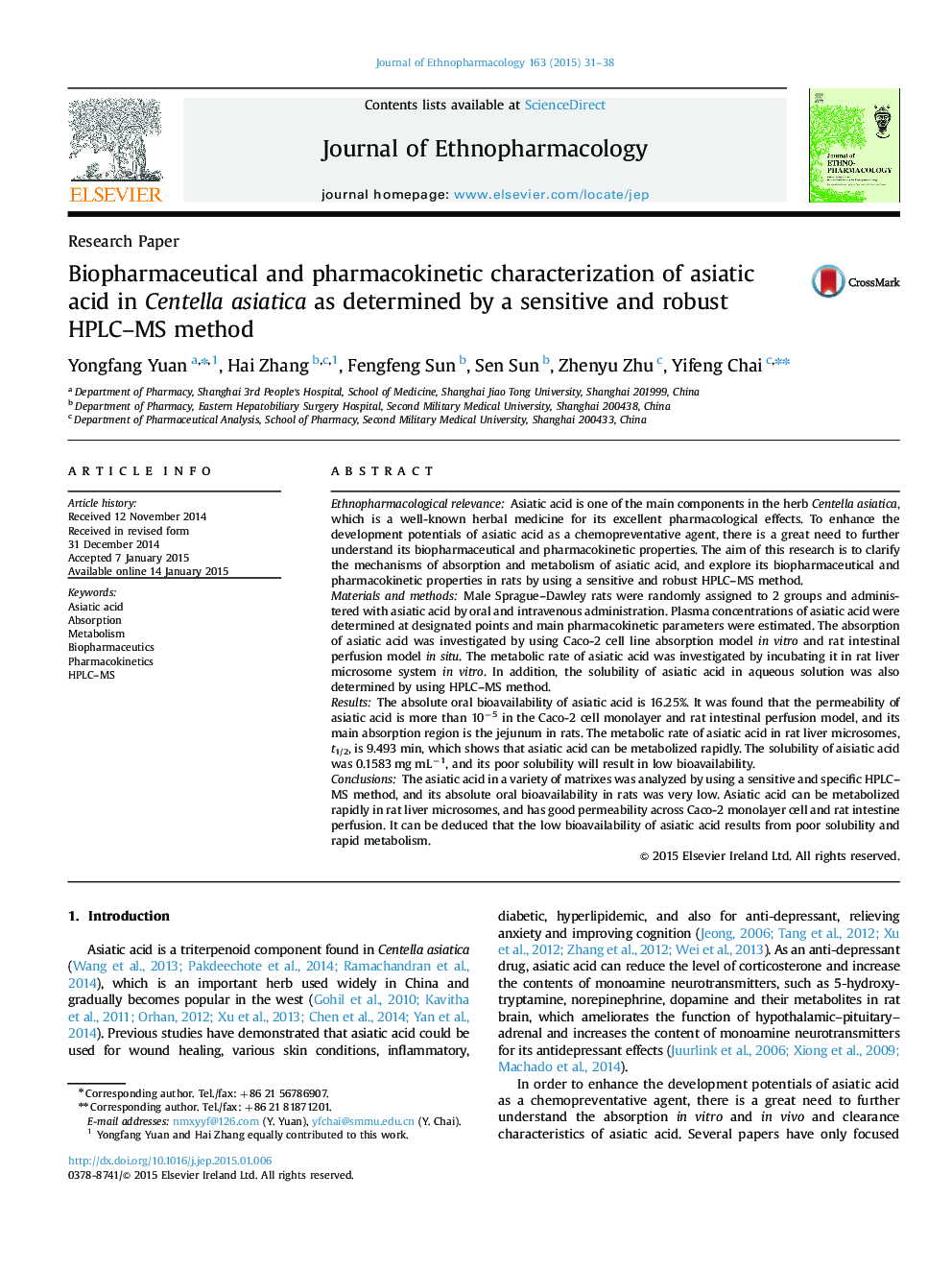| کد مقاله | کد نشریه | سال انتشار | مقاله انگلیسی | نسخه تمام متن |
|---|---|---|---|---|
| 2545016 | 1560399 | 2015 | 8 صفحه PDF | دانلود رایگان |

Ethnopharmacological relevanceAsiatic acid is one of the main components in the herb Centella asiatica, which is a well-known herbal medicine for its excellent pharmacological effects. To enhance the development potentials of asiatic acid as a chemopreventative agent, there is a great need to further understand its biopharmaceutical and pharmacokinetic properties. The aim of this research is to clarify the mechanisms of absorption and metabolism of asiatic acid, and explore its biopharmaceutical and pharmacokinetic properties in rats by using a sensitive and robust HPLC–MS method.Materials and methodsMale Sprague–Dawley rats were randomly assigned to 2 groups and administered with asiatic acid by oral and intravenous administration. Plasma concentrations of asiatic acid were determined at designated points and main pharmacokinetic parameters were estimated. The absorption of asiatic acid was investigated by using Caco-2 cell line absorption model in vitro and rat intestinal perfusion model in situ. The metabolic rate of asiatic acid was investigated by incubating it in rat liver microsome system in vitro. In addition, the solubility of asiatic acid in aqueous solution was also determined by using HPLC–MS method.ResultsThe absolute oral bioavailability of asiatic acid is 16.25%. It was found that the permeability of asiatic acid is more than 10−5 in the Caco-2 cell monolayer and rat intestinal perfusion model, and its main absorption region is the jejunum in rats. The metabolic rate of asiatic acid in rat liver microsomes, t1/2, is 9.493 min, which shows that asiatic acid can be metabolized rapidly. The solubility of aisiatic acid was 0.1583 mg mL−1, and its poor solubility will result in low bioavailability.ConclusionsThe asiatic acid in a variety of matrixes was analyzed by using a sensitive and specific HPLC–MS method, and its absolute oral bioavailability in rats was very low. Asiatic acid can be metabolized rapidly in rat liver microsomes, and has good permeability across Caco-2 monolayer cell and rat intestine perfusion. It can be deduced that the low bioavailability of asiatic acid results from poor solubility and rapid metabolism.
Figure optionsDownload high-quality image (118 K)Download as PowerPoint slide
Journal: Journal of Ethnopharmacology - Volume 163, 2 April 2015, Pages 31–38